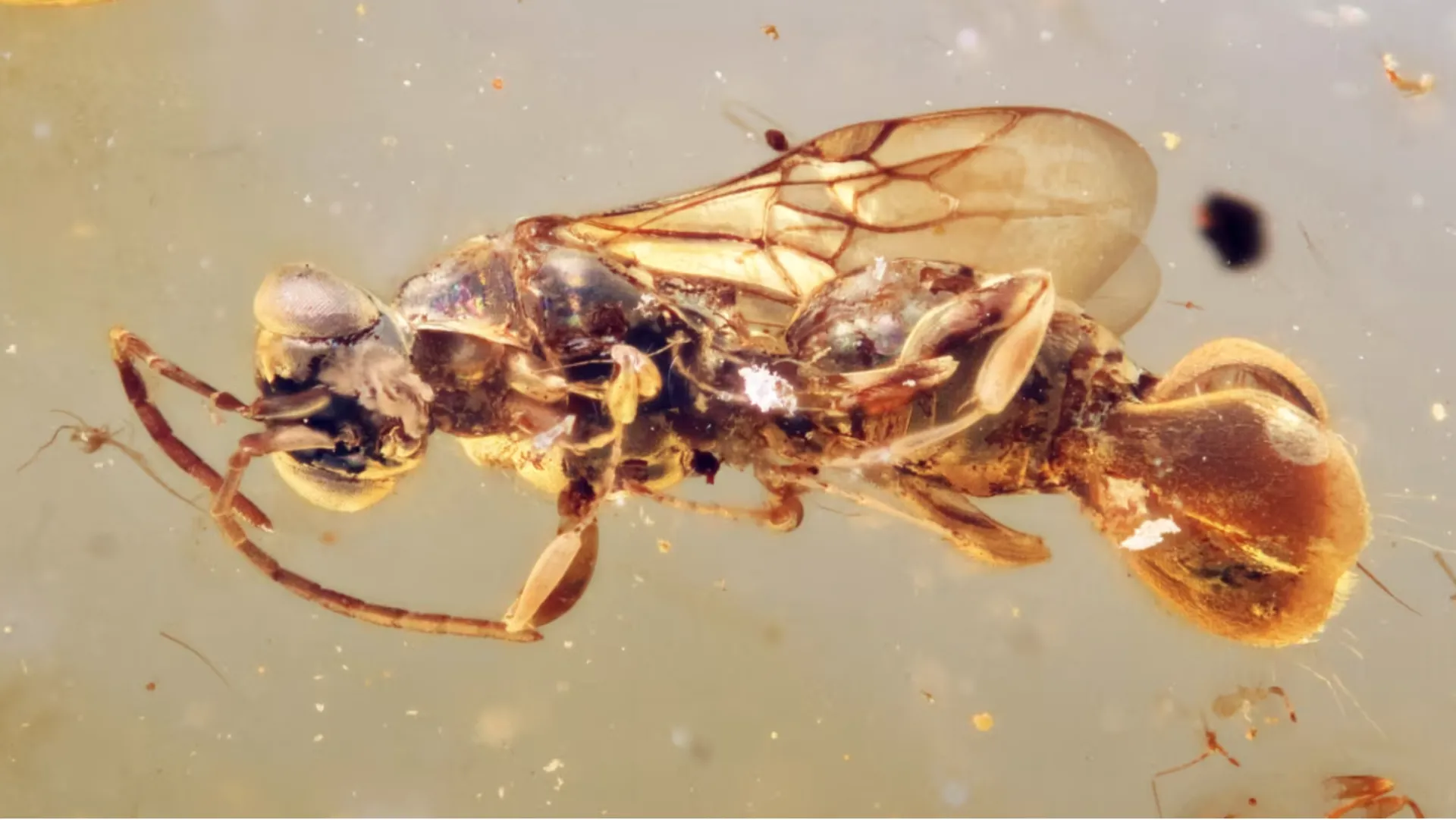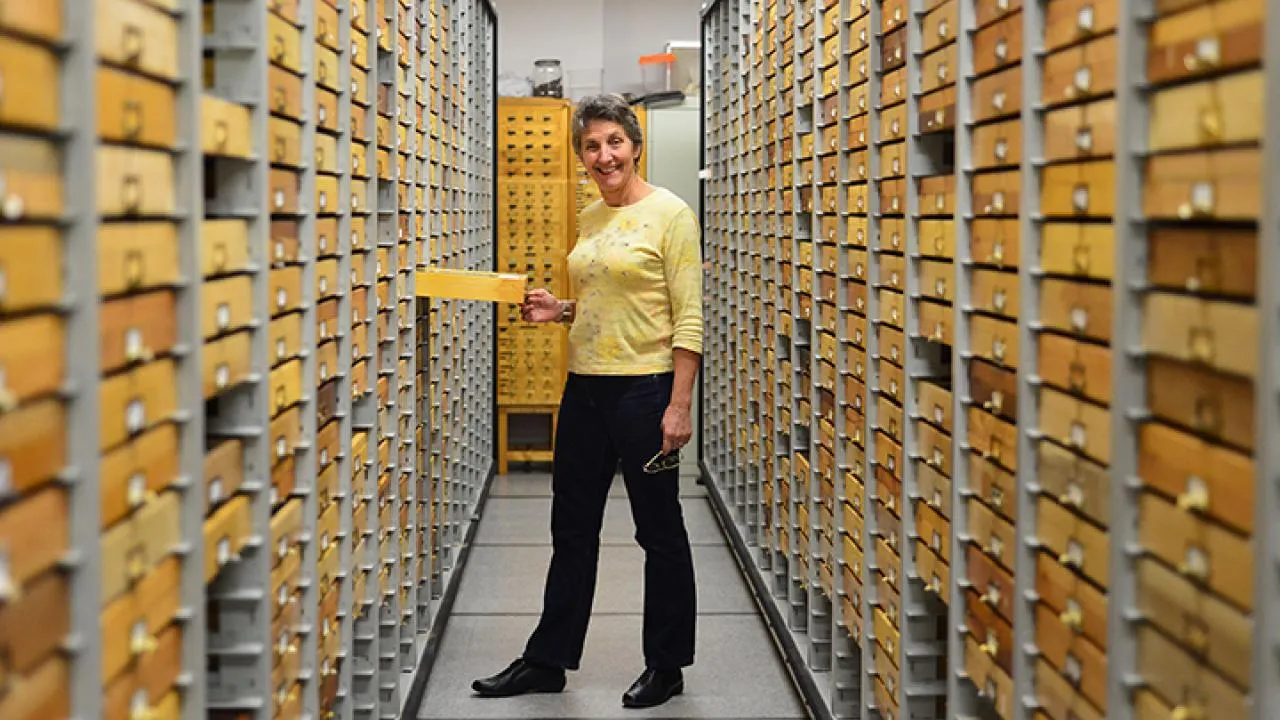
What a wasp!
“I've seen a lot of strange insects, but this has to be one of the most peculiar-looking ones I've seen in a while."
That's what UC Davis Distinguished Professor Emerita Lynn Kimsey, fondly known as "The Wasp Woman," told a reporter for the Independent, London, when asked about a dinosaur-era wasp embedded in 99-million-year-old amber and collected in 2015 in northern Myanmar.
Kimsey. who retired last year as the 34-year director of the Bohart Museum of Entomology but continues her research and as the editor of the Bohart Museum newsletter, wrote about the discovery in a recent newsletter.
"Scientists, Quiong Wu, Lars Vilhelmsen, Xiooquin Li, De Zhuo, Dong Ren and Taiping Gao, described a bizarre wasp fossilized in amber, and published in the journal BMC Biology," Kimsey wrote. "The amber was found in the Kachin region in northern Myanmar and is estimated to be mid-Cretaceious, some 99 million years old. They named it Sirenobethylus charybdis, after the sea monster, Charybdis, of Greek mythology."
"It appears to be female with a stinger, and is 1.7 cm long (about 0.7 in.)," Kimsey noted. "The end of the abdomen is modified into a weird paddle-like structure, with a large bottom flap and two dorsal flaps, and long 'trigger hairs' The inner surfaces of the paddles are also covered with hairs. They proposed that the modified abdomen was used to capture and hang onto prey to facilitate egg laying."
Kimsey, who was not involved in the research, is a past president of the International Society of Hymenopterists (2002-2004) and served as a member of the board of directors of the Natural Science Collections Alliance in 2000 and 2001.

The research, "A Cretaceous Fly Trap? Remarkable Abdominal Modification in a Fossil Wasp," appears, open access, in the BMC Biology. It was pub March 27, but the news keeps recirculating..
Flora Lichtman of Science Friday interviewed co-author Lars Vilhelmsen, an associate professor and curator at the Natural History Museum of Denmark, on May 2 about the research.
"Entomologists report a new fossil find, a prehistoric wasp that had one of a kind attack method. It seemed to grab its prey with its butt flaps, capturing its booty in its booty like a tuchus flytrap," Lichtman began. "And then once the wasp had its prey in tail, it injected its parasitic eggs into it, which would then hatch and slowly devour the victim from the inside out."
Vilhelmsen said was it was "probably living in a forest area. And, in fact, we found 16 specimens of this very particular wasp." He added that it appeared it couldn't move fast, and its "legs are not very long. And so we imagine it would probably wait like an ambush with the trap open. And on the edge of the lower flap of the trap, there’s very elongated hairs extending fan-like, and we imagine these served as trigger hairs."
It's been compared to a Venus fly trap.
"And this is how a Venus fly trap works, the trigger hairs?" Lichtman aske Vilhelmsen
"Yeah, yeah, more or less,"Vilhelmsen told her. "The Venus fly trap, the trigger hair sits inside the flaps, so the fly or whatever the plant has to catch has to move all the way in between the leaves. That might not have been necessary for the host of this wasp. So when a potential victim or host moved just behind the abdomen of the wasp, the wasp could sense it and then quickly lunge backwards and grasp the host in the flaps."
Vilhelmsen expanded on the name, Sirenobethylus charybdis, in the Science Friday podcast. "Charybdis refers to a monster in ancient Greek mythology which almost swallowed Odysseus when he was traveling the world. And, yeah, Sirenobethylus was– a siren was also a monster that lured sailors to their death. But it’s also because there’s a group of mammals, sea cows and manatees, and the tail of a manatee in outline actually looks like the flap of this wasp also."
Interesting stuff. Can you imagine this prehistoric insect living among the dinosaurs nearly 100 million years ago?
As Kimsey said: “I've seen a lot of strange insects, but this has to be one of the most peculiar-looking ones I've seen in a while."
